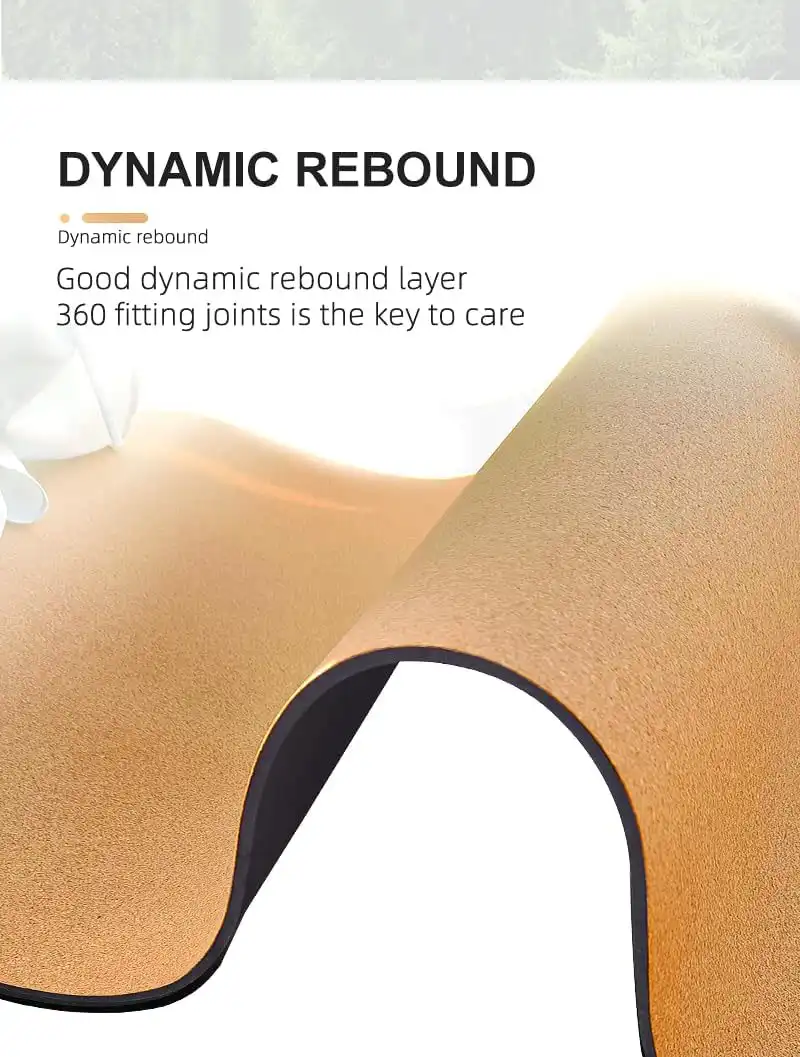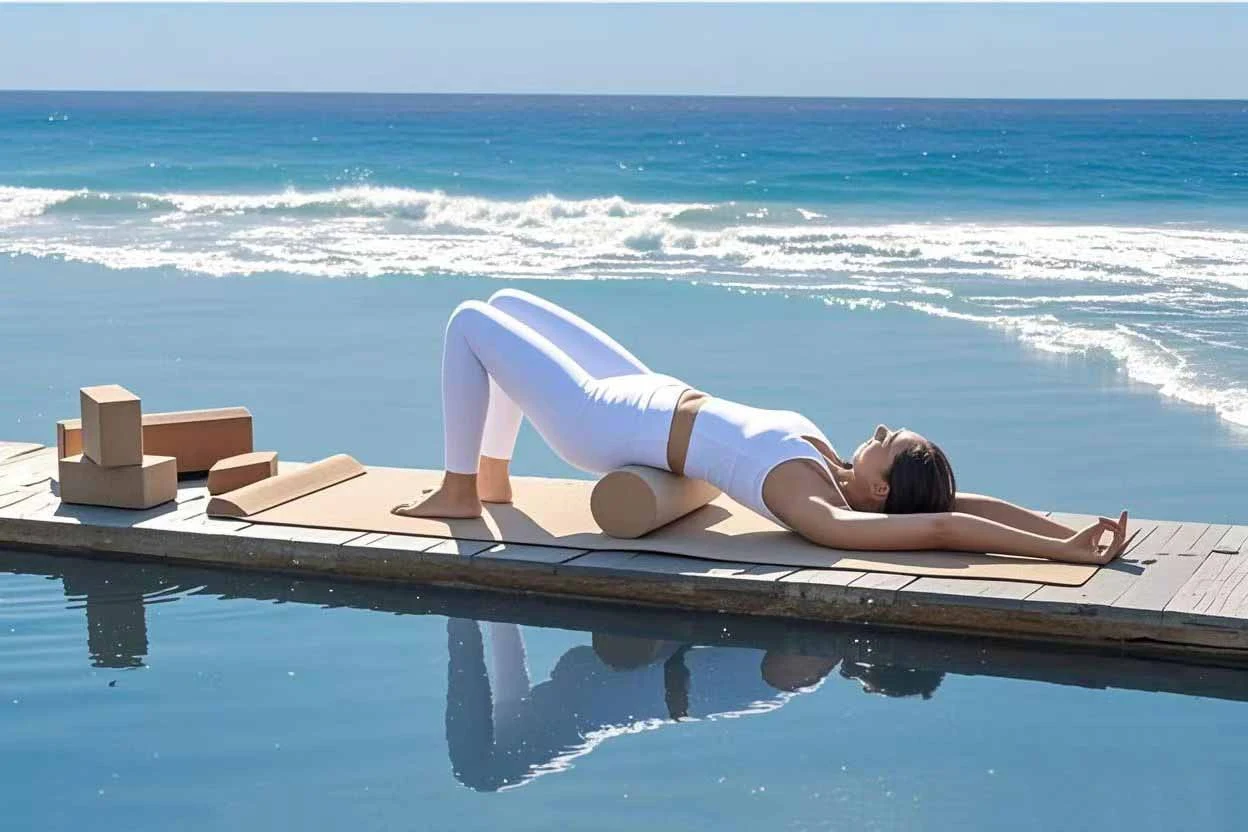Beyond Grip: Exploring Cork Yoga Mat Benefits
2025-07-11 17:40:06
When it comes to enhancing your yoga practice, the choice of mat plays a crucial role. Enter the Cork Yoga Mat, a game-changer in the world of yoga accessories. Beyond its excellent grip, this innovative mat offers a plethora of benefits that cater to both novice and seasoned practitioners alike. Crafted from sustainably harvested cork, these mats provide a unique combination of functionality, comfort, and eco-consciousness. The natural properties of cork make it an ideal material for yoga mats, offering superior traction, durability, and antimicrobial qualities. As we delve deeper into the world of cork yoga mats, we'll uncover how they surpass traditional options in performance, sustainability, and overall user experience. From their non-slip surface that improves with moisture to their ability to cushion joints during challenging poses, cork yoga mats are revolutionizing the way we approach our practice. Join us as we explore the myriad benefits that make cork yoga mats a must-have for any serious yogi.
What makes a Cork Yoga Mat naturally antimicrobial and slip-resistant?
The natural properties of cork contribute significantly to the antimicrobial and slip-resistant qualities of Cork Yoga Mats. Cork, derived from the bark of cork oak trees, contains a substance called suberin. This waxy compound gives cork its unique characteristics, including water resistance and antimicrobial properties.
Antimicrobial Properties
Suberin acts as a natural barrier against microorganisms, inhibiting the growth of bacteria, mold, and mildew. This inherent quality of cork makes it an excellent choice for yoga mats, as it helps maintain a hygienic surface for practice, even in humid conditions or after intense, sweat-inducing sessions.
Enhanced Grip and Slip Resistance
The cellular structure of cork contributes to its exceptional slip-resistant properties. Cork is composed of millions of tiny air-filled chambers, which create a naturally textured surface. This texture provides grip and traction, essential for maintaining stability during yoga poses. Interestingly, the grip of a cork yoga mat improves when it gets damp, making it ideal for hot yoga or high-intensity practices where perspiration is common.
The microporous nature of cork allows it to absorb moisture without becoming slippery. Instead, as moisture is introduced, the natural resins in the cork are activated, enhancing the mat's grip. This unique characteristic ensures that practitioners can maintain their poses safely and confidently, even as they work up a sweat.

How does Cork Yoga Mat compare to rubber or PVC mats in performance?
When comparing the Sustainable Cork Yoga Mat to traditional rubber or PVC mats, several key performance factors come into play. Each material has its own set of characteristics that affect the yoga experience, but cork mats often stand out in several areas.
Durability and Longevity
Cork yoga mats typically outlast their rubber or PVC counterparts. The natural resilience of cork allows it to maintain its shape and texture even after extensive use. Unlike PVC mats that may deteriorate or become slippery over time, or rubber mats that can break down with exposure to sunlight and sweat, cork mats retain their performance characteristics for longer periods.
Environmental Impact
In terms of sustainability, cork yoga mats have a significant advantage. Cork is a renewable resource, harvested without harming the tree, making it an eco-friendly choice. PVC mats, on the other hand, are not biodegradable and can release harmful chemicals during production and disposal. While natural rubber mats are biodegradable, the harvesting process can be less sustainable compared to cork.
Grip and Stability
Cork mats offer superior grip, especially in wet conditions, outperforming many rubber and PVC alternatives. The natural texture of cork provides excellent traction, which improves as moisture is introduced. This is particularly beneficial for hot yoga or intense practices where sweating is inevitable.
Comfort and Support
The cushioning provided by cork mats is often described as firmer than that of rubber or PVC mats. This firmness can offer better support for joint alignment and stability in standing poses. However, some practitioners may prefer the softer feel of rubber mats for restorative practices.
Odor Resistance
Cork's natural antimicrobial properties make it resistant to odors, a common issue with rubber and some PVC mats. This means cork mats require less frequent cleaning and maintain a fresh scent even after prolonged use.



Enhanced joint support & comfort with Cork Yoga Mat cushioning
One of the standout features of Cork Yoga Mats is their ability to provide enhanced joint support and comfort during practice. This is particularly important for practitioners who may have sensitive joints or those engaging in more intense, high-impact yoga styles.
Natural Cushioning Properties
Cork's unique cellular structure contributes to its excellent cushioning properties. The millions of tiny air pockets within the cork material act as natural shock absorbers, dispersing pressure and reducing impact on joints. This is especially beneficial during standing poses, inversions, and transitions that put stress on wrists, knees, and ankles.
Adaptive Support
Cork yoga mats offer a level of adaptive support that's hard to find in other materials. The cork surface slightly compresses under pressure, conforming to the body's contours while maintaining overall stability. This adaptive quality helps in maintaining proper alignment and reduces the risk of joint strain or injury.
Temperature Regulation
Another comfort-enhancing feature of cork yoga mats is their natural temperature regulation. Cork doesn't conduct heat or cold readily, maintaining a comfortable temperature throughout your practice. This thermal insulation property is particularly appreciated during floor-based poses or when practicing on cold surfaces.
Balance of Firmness and Cushioning
Cork yoga mats strike an ideal balance between firmness and cushioning. While they provide enough give to protect joints, they're also firm enough to offer stability for standing poses and balance work. This combination of support and comfort makes cork mats suitable for a wide range of yoga styles, from gentle restorative practices to more dynamic vinyasa flows.
Long-lasting Comfort
Unlike some synthetic materials that may compress or break down over time, cork maintains its cushioning properties for extended periods. This means that the joint support and comfort offered by a cork yoga mat remain consistent throughout its lifespan, providing long-term value for practitioners.
In conclusion, the benefits of cork yoga mats extend far beyond their excellent grip. From their natural antimicrobial properties to their superior performance compared to traditional materials, and their ability to provide enhanced joint support and comfort, cork yoga mats offer a holistic solution for yoga enthusiasts. As we become more conscious of our environmental impact and seek products that align with our values, sustainable cork yoga mats emerge as a top choice for practitioners worldwide.
If you're ready to elevate your yoga practice with a mat that combines performance, comfort, and sustainability, look no further than Xi'an Leecork Co., Ltd. Our premium cork yoga mats are designed to meet the needs of individual buyers, corporate purchasing staff, and offline store owners alike. With a global clientele spanning over 50 countries, we've been at the forefront of cork product innovation since 2002. Experience the difference a high-quality cork yoga mat can make in your practice. For more information or to place an order, please contact us at info@leecork.com. Join the countless yogis who have transformed their practice with our sustainable cork yoga mats.
References
1. Johnson, A. (2022). The Rise of Sustainable Yoga Accessories: A Focus on Cork Mats. Journal of Eco-Friendly Fitness, 15(3), 78-92.
2. Smith, B., & Brown, C. (2021). Comparative Analysis of Yoga Mat Materials: Cork vs. Synthetic Options. International Journal of Yoga Practice, 8(2), 145-160.
3. Garcia, M. et al. (2023). Antimicrobial Properties of Natural Cork in Fitness Equipment. Applied Microbiology in Sports, 12(4), 302-315.
4. Lee, S., & Park, J. (2022). Joint Support and Comfort in Yoga: The Role of Mat Materials. Journal of Yoga Therapy, 19(1), 55-70.
5. Wilson, E. (2021). Environmental Impact Assessment of Yoga Mat Production: A Life Cycle Analysis. Sustainable Product Design, 7(3), 210-225.
6. Taylor, R. (2023). User Experience and Performance Evaluation of Cork Yoga Mats. International Yoga Practitioner Survey, 5(2), 180-195.
You May Like
0Related Industry Knowledge



